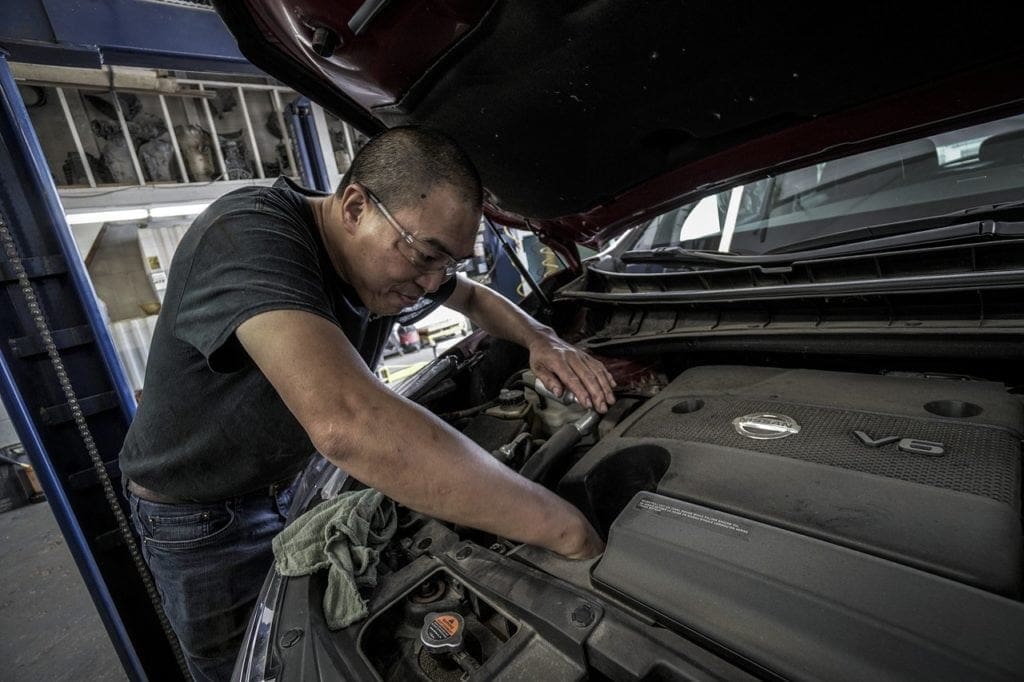The arrival of the festive season always brings the longing for adventure and what better way to satisfy this desire than taking a road trip. Read on to find out how you can prepare your car for vacation driving.
No other way of travel is as fun as a road trip with friends and family. Why fly and miss the beautiful scenery, memorable moments, and all the travel fun that you can have in family vacation driving. Road trips provide the perfect opportunity to escape the mundane of daily living and make awesome memories along the way. You get to see more, experience more, be grateful for more, and have fun on a budget.
Great road trips are made up of a destination, plenty of entertainment options for everyone on board, and a roadworthy vehicle. Gone are the days of riding in a hot vinyl back seat of a car with no air conditioning. Modern car features such as leather seats, a navigation system, and air conditioning make today’s expeditions a breeze. No more depending on hand-cracked windows or being bored to death while road tripping. These days, back-seaters can entertain themselves using the rear entertainment system and all other kinds of onboard distractions for hours.
However, before leaving for a vacation, it is essential to do a quick pre-trip mechanical check of your car. A breakdown on the way will turn your long-awaited holiday into a mechanic’s “pay-cation.” Therefore, taking preventive measures before leaving will save you a save a lot of stress. If you feel like you are not up to the task, you can hire a reputable shop to inspect your car at a fair price. However, by taking the time to learn and poke around, you can save yourself time and money. Here are a few tips on how to prepare your car for a road trip:
Check the Fluid Levels
Fluids are the life force of a car. Service intervals for your car depend on mileage. So it is essential to consider how far you plan to be in the car driving. These fluids include:
- Oil: You do not need to be an expert to know that oil is vital for an engine. It lubricates moving parts like the crankshaft, pistons, and the camshaft so they can move without friction. You can use a dipstick to check the oil condition and level. If it is gritty, black, or below minimum, have someone check it out right away before a long car trip.
- Radiator Fluid is also known as antifreeze or coolant. It works to extract heat from the engine and disperses it throughout the radiator. Low levels of radiator fluid will likely result in overheating which is dangerous for your car. So check the coolant level and refill if needed. Also, ensure that you service at 50,000 miles interval.
- Power Steering Fluid is a hydraulic fluid that makes modern steering cars easy. Replacing it is not necessarily on the regular maintenance list for most vehicles. However, it can be contaminated and needs to be checked on before a vacation trip.
- Brake Fluid is a non-compressible substance within brake lines. It transmits force from the brake pedal to the brake rotors on the four wheels of your vehicle and ultimately slows or stops the moving car. Over time, it can absorb moisture or get degraded and therefore not work well. Therefore, ensure that you refill it before a trip and change it every 36000 miles.
- Windshield fluid helps keep your windshield clean allowing you to have better visibility of the road. It is easy to refill. You need a jug of liquid and a funnel to fill the reservoir once it gets low.
- Transmission Fluid helps lubricate the gears and other transmission components for optimum performance. It usually lasts for a long time, but it is a good idea to replace it at 60,000 miles.
Check the Condition of the Car Tires before Going for a Road Trip
Every road traveler wants to get the best fuel efficiency, safety, and comfort. Therefore, it is essential to check the condition of the tires before leaving for a trip. You can do this by checking the air pressure every 1,000 miles. Underinflated tires will require more fuel while overinflated tires will make the ride unbearable since they are less compliant. Wrong air pressure can cause the tires to wear out unevenly and thus require replacement sooner. Therefore, ensure you have the correct air pressure before your car trip.
You can also rotate the tires periodically between different locations of the car. This is because, even though the pressure is correct, variations in weight balance, road conditions, and suspension calibration make the tires wear out at different rates. You can swap front and rear or right and left side to help the tires last longer. Tires should be swapped every 5,000 to 8,000 miles. They should also be replaced if damage such as sidewall bulges or punctures occurs.
General Maintenance
Cars have a myriad of components that need maintenance to stay in optimum conditions. Maintaining these components can keep your car in excellent shape. Therefore, make sure you check these parts before any vacation driving:
- Brake Pads provide the friction that is required to slow or stop a moving vehicle. They wear out easily by getting too thin to work efficiently. It is usually apparent when this happens because they make a squealing noise. This noise should alert you to replace the pads. Be sure to choose a suitable brake pad for your vehicle. Brake pads can last from 25,000 to 70,000 miles depending on what they are made of and how they are used.
- Light Bulbs: Burnt out lights can get you pulled over by cops during a drive. To check whether your light bulbs are working, turn on the car and switch on the headlights. Then, with the car in park, walk around to check if the lights are burnt out. Repeat the process for the signal lights. To see if the tail lights work, put a brick to hold the brake pedal or ask someone to step on them while the car is still in park then walk to the back to check their conditions and change them if they are burnt.
- Air Filters: Cars use air filters to prevent dirt from entering the engine or interior. They can eventually become clogged and potentially affect the engine’s performance, air quality, and fuel economy. Therefore, they should be replaced every 12,000 miles.
- Belts and Hoses: For safe driving, look under the hood to inspect the belts for cracks, frays, or missing teeth and replace the belts if you notice any of these problems. Also, check the hoses to see if they are leaking. Having a faulty hose can be disastrous for an engine.
Conclusion
It might seem like you have a lot of things to look out for or worry about. But the truth is if you frequently do mechanical check-ups and maintenance, this process will take you an hour at most. This is because if your car is maintained regularly, all you will be doing is verifying if everything is in order. However, if you have been slacking on the repairs, it will probably take more time and money. But all this is not nearly as bad as having a journey ruined by a preventable problem. So do a pre-trip check-up before hitting the open road to keep your car running throughout the trip. Remember, the oil level is serviced regularly – one of the crucial safe driving habits to have!
Have you ever tried out some of these vacation driving tips? If you have, please share it with us by commenting below.
About the author:
Carlos Blue is an auto expert, traveler, and father of 2 awesome kids. He loves cars and everything related to it. Carlos works at the Shell Service Station and writes expert reviews for AutoExpertGuides. Follow him on Twitter.
Image credits: Image credits: Image credits






